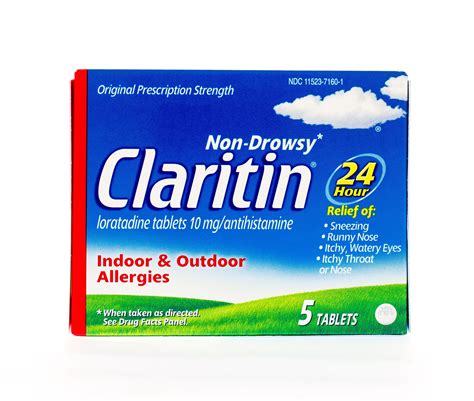Bursitis, an inflammatory condition affecting the fluid-filled sacs (bursae) that cushion joints, bones, and muscles, can cause significant discomfort and hinder daily activities. The knee, being a complex joint that bears a substantial amount of body weight, is particularly susceptible to bursitis. Knee bursitis can result from direct blows to the knee, frequent kneeling, or conditions like arthritis. While medical interventions are available, many individuals seek natural remedies to alleviate symptoms and promote healing. This comprehensive guide will delve into the world of natural healing for knee bursitis, exploring remedies, lifestyle adjustments, and preventative measures.
Understanding Knee Bursitis
Before diving into natural healing methods, it’s essential to understand the basics of knee bursitis. The knee contains several bursae, but the prepatellar bursa (in front of the kneecap) and the infrapatellar bursa (below the kneecap) are most commonly affected. Symptoms of knee bursitis include pain, swelling, warmth, and limited mobility around the knee. If not addressed, bursitis can lead to chronic pain and reduced functionality of the knee.
Natural Remedies for Knee Bursitis
Rest, Ice, Compression, Elevation (RICE): The RICE method is a first-line treatment for many musculoskeletal injuries, including bursitis. Resting the affected knee, applying ice to reduce pain and inflammation, compressing the area with a bandage, and elevating the knee above the level of the heart can help alleviate symptoms.
Herbal Remedies: Certain herbs have anti-inflammatory properties that can help reduce swelling and pain associated with bursitis. Turmeric, containing curcumin, and ginger are popular for their anti-inflammatory effects. They can be consumed as supplements, added to food, or made into topical creams.
Physical Therapy: Gentle exercises and stretches can improve knee mobility and strength, reducing the risk of further irritation to the bursae. A physical therapist can tailor a program to fit individual needs, focusing on low-impact exercises that do not exacerbate the condition.
Dietary Changes: An anti-inflammatory diet rich in omega-3 fatty acids, antioxidants, and whole foods can help reduce inflammation throughout the body, including in the knee. Foods like salmon, walnuts, and leafy greens are beneficial. Additionally, avoiding processed foods and sugars, which can trigger inflammation, is recommended.
Heat and Cold Therapy: After the initial inflammatory phase, applying heat can increase blood flow to the area, promoting healing. Cold therapy, on the other hand, can help reduce pain and inflammation during acute phases.
Lifestyle Adjustments
Making certain lifestyle adjustments can not only aid in the healing of knee bursitis but also prevent future occurrences.
Weight Management: Excess weight puts additional stress on the knee joint, exacerbating bursitis. Maintaining a healthy weight through diet and exercise can alleviate some of this pressure.
Proper Knee Protection: For individuals whose work or hobbies involve kneeling (e.g., gardeners, carpenters), using knee pads can significantly reduce the risk of developing knee bursitis.
Exercise Modification: Avoiding activities that aggravate the condition is crucial during the healing process. Modifying exercises to reduce impact on the knee or opting for low-impact activities like cycling or swimming can help.
Preventative Measures
Prevention is key when it comes to knee bursitis. Implementing preventative strategies can reduce the risk of developing the condition or experiencing recurrence.
Strengthening Exercises: Strengthening the muscles around the knee can provide additional support and stability, reducing the risk of bursitis. Exercises like squats, lunges, and leg presses, when done properly, can be beneficial.
Proper Footwear: Wearing shoes that fit well and provide adequate support can help align the body properly, reducing unnecessary stress on the knee.
Regular Breaks: For individuals with jobs that involve standing or kneeling for prolonged periods, taking regular breaks to rest and stretch can help prevent bursitis.
Conclusion
Healing knee bursitis naturally requires patience, persistence, and a comprehensive approach that includes remedies, lifestyle adjustments, and preventative measures. By understanding the condition, implementing natural remedies, making necessary lifestyle changes, and taking preventative steps, individuals can effectively manage knee bursitis and work towards a full recovery. It’s also important to consult with healthcare professionals before starting any new treatments to ensure the best course of action for individual circumstances.
What are the primary causes of knee bursitis?
+The primary causes of knee bursitis include direct blows to the knee, frequent kneeling, and conditions like arthritis. Repetitive motion and poor posture can also contribute to the development of bursitis.
Can knee bursitis be treated without surgery?
+Yes, most cases of knee bursitis can be treated without surgery. Natural remedies, rest, and physical therapy are often effective in reducing symptoms and promoting healing. However, in severe cases where there is significant swelling, infection, or the bursa is severely irritated, medical intervention may be necessary.
How long does it take to recover from knee bursitis?
+The recovery time for knee bursitis can vary depending on the severity of the condition and the effectiveness of the treatment approach. Mild cases may resolve within a few weeks, while more severe cases can take several months to heal completely. It’s essential to follow a healthcare provider’s advice and not rush back into activities too quickly to prevent recurrence.


